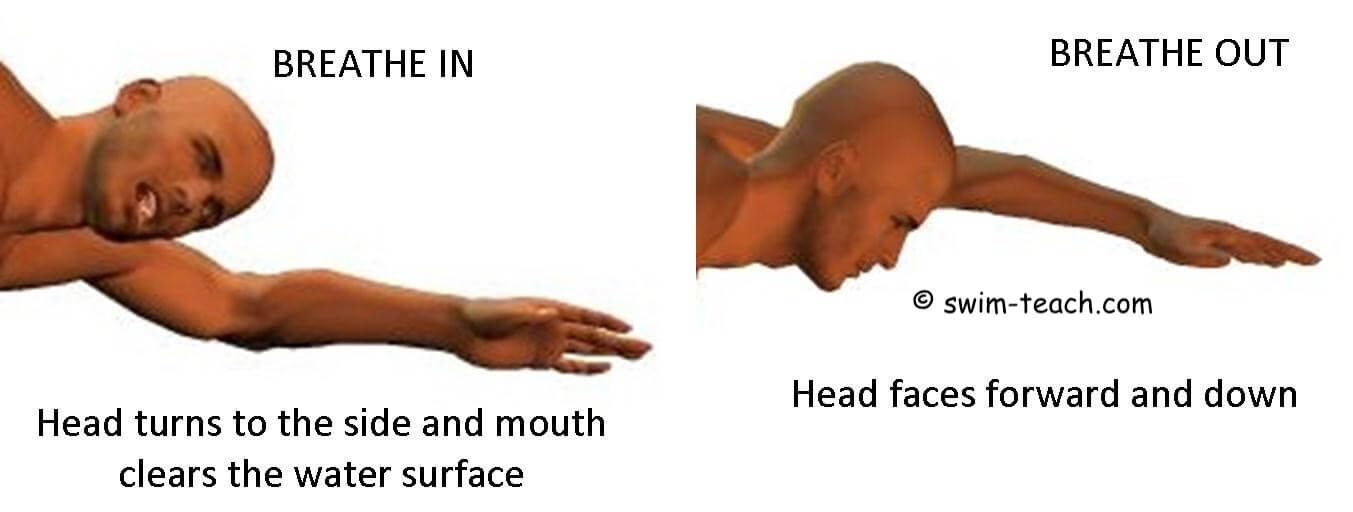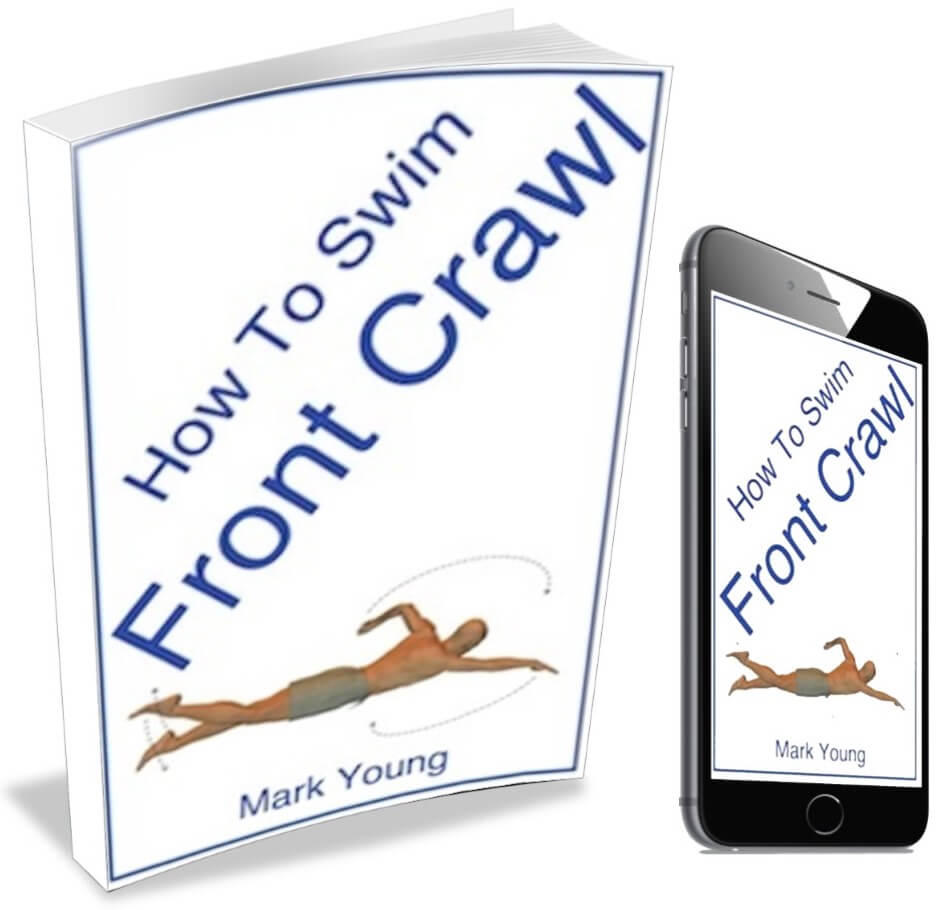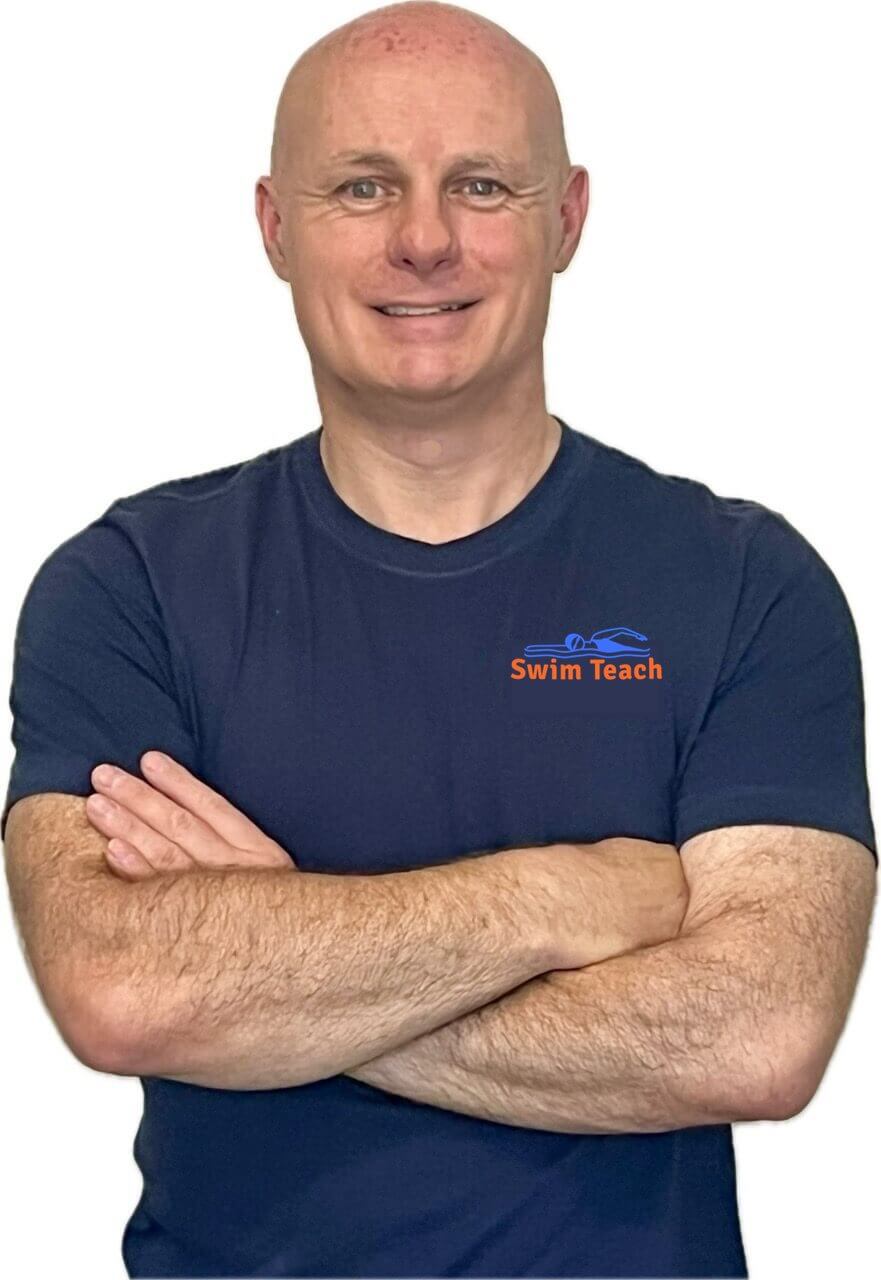- Swim Teach Home
- front crawl
- Front Crawl Breathing
- Get Tired Swimming Front Crawl
Why Do I Get Tired Swimming Front Crawl?
I have a question about breathing while doing front crawl. In the lane swim tonight, I found out that several of us are having a similar problem -- ending up totally winded before we've done two lengths, even though we're in the pool often and aren't complaining of tired arms and legs.
In my case, I'm doing bilateral, trickle breathing and don't think I'm breathing explosively. I'm trying to keep my hips high and not kick too hard, though I'm sure I do that sometimes.
I'm pretty sure my kick isn't well coordinated with my arm movements. I'm also confused about the degree of rotation I should be aiming for, because some swimmers (such as Master's swimmer Karlyn Pipes-Nielsen) say that many swimmers over-rotate and should be flatter in the water, while others blame all difficulties on not rotating enough.
I'm trying to work on everything I can think of, but it's tough when you have to stop after every length or two. (The most I've ever done consecutively in a 25m pool is four.)
Thanks for any ideas you can provide. (BTW, the group of us asked the lifeguard tonight about this problem, and she seemed to have absolutely no idea. I think she thought we were all just too old -- 40s, 50s. But we're all in good shape otherwise, and some of the swimmers in the pool who lazily swim the longest distance don't appear to be in particularly good shape at all. We are baffled.) Thanks again.
The question you are raising is a very common one, particularly when it comes to front crawl. Basically, it boils down to stamina and relative fitness. You can tweak and fine-tune front crawl technique and it will help, but the main thing in control here is our old friend fitness.
Assuming you have a decent grasp of basic front crawl, which it sounds like you have if you can swim 100m, then some small adjustments in technique and maybe some changes in swimming speeds could see you covering some longer distances using less energy.
It is very common for front crawl swimmers to attack the water and swim too fast, sometimes without knowing they are doing so. Slowing right down and performing the stroke smoothly with accuracy, balance, and control can sometimes make an instant difference.
Some technique points to consider…
Think about the shape your body is creating in the water . Is it streamlined and efficient? If you were to perform a ‘push and glide’ from the poolside, would you glide 10m or more, or would you slow down before 5m?
Your shape as you glide from a push from the pool wall should be with your head tucked in-between your arms and with hands and feet together to maximise efficiency. Practice it to get a feel for your own efficiency.
Now apply that shape to your front crawl. Hands return to a central point in front of the head before they begin to pull again, and legs kick with feet together and legs outstretched. Create the most streamlined body shape you possibly can so that you cut through the water.
You mentioned breathing and that you trickle breathe - that’s good. As for rotation, try to look at your shoulder as you breathe.

It will ensure that your head position remains flat while your mouth can still clear the water as you inhale, and as long as your arm recovery is not too high over the water, there will be no risk of over rotation.
So, the people you see lazily swimming very long distances are either:
a) highly trained and very fit (unlikely!)
b) swimming breaststroke, which can be done badly and effortlessly at the same time
c) swimming well within their comfort zone (most likely) and have done so for many years
Keep in mind that swimming fitness is very different to other types of fitness. An established marathon runner may be able to swim a basic front crawl but will be completely exhausted after 25m. This is because the body uses completely different energy systems.
Swimming front crawl is like any other form of exercise in that the more you do it, the fitter you become and the easier it then becomes. Apologies for stating the obvious, but it's easy to look for a quick fix in our technique when actually some plan old laps up and down are the fix that is sometimes the best one.
And by the way, age has nothing to do with it, so keep going!
HOW TO SWIM FRONT CRAWL EBOOK: everything you need to master front crawl swimming stroke. 22 easy drills that focus on each part of front crawl technique. From body position to breathing and timing. Decades of teaching experience all packaged into 1 easy file. Download to your device and master front crawl TODAY! (click here for an instant preview).
Don't miss out! Click here for more details on how to get your copy.
Front Crawl Breathing Through The Nose Or Mouth?
Hi, I am having swimming lessons to try to learn to swim front crawl rather than just 'head out of the water breaststroke', which is all that my swimming ability has been for the last fifty years. I am having lessons at the local pool and have just purchased your book 'How To Swim Front Crawl' through Amazon as an aid to learning. One point puzzles me, we are told to trickle breath out through our noses whilst you advocate this is a fault. Why the difference, and why do you class breathing out through the nose as a fault, please?
Breathing technique when swimming any stroke is best done in and out through the mouth. The simple reason is that the mouth is a bigger opening than the nose, making it easier and more efficient to get air in and out.
Most beginners learning to swim, especially front crawl, find breathing the most difficult part. If they are encouraged to exhale through the nose, then their natural instinct is to then inhale through the nose. This makes the whole breathing process slower.
Also, we are able to shape our mouth and lips in order to help control the speed at which we exhale - something we can't do with our nose. I encourage my pupils to 'breathe out through pursed lips' in an attempt to help them control their breathing. Granted, you can breathe out slowly through your nose, but it is much easier to control through the mouth.
Then, if exhalation takes place through the mouth, inhalation is more likely to occur naturally through the mouth too, which will ensure sufficient air is taken in quickly (as it's a larger opening). Also, it is very easy to take water up into the nose accidentally on inhalation, which can be very unpleasant and off-putting.
My book is aimed at beginners learning front crawl and needing some extra guidance, but it is just that - a book. For that reason, I have to be very general and cover as wide an audience as possible as I am not able to see everyone swimming! Therefore I class breathing through the nose as a fault in an attempt to ensure everyone is practising the easiest technique possible.
There is no law against breathing through the nose, and you may well find it very comfortable, but I would encourage you to try both methods and see which you prefer.
Many world-class swimmers wear a nose clip to completely eliminate the use of the nose when they swim.
Do whatever your swimming teacher is advising you to do, as they know what is best for you as an individual. He or she can actually see you swimming. I can’t!
I hope I have helped in some way. Thank you very much for purchasing my book, and I wish you every success with your swimming.payn
 How To Swim Front Crawl
How To Swim Front Crawl$9.99

I am a member of the Amazon Associates Program and I will earn a commission from qualifying purchases at no extra cost to you.
When and How to Breathe For Front Crawl
When and how to breathe for front crawl? Can we hold our breath for some time, then breathe? Can we breathe whenever we want, or do we have to breathe for every stroke?
The short answer to both of your questions is that it is completely your own choice. There is no right or wrong way to breathe. However, consider the following:
There are two types of breathing for front crawl: trickle breathing and explosive breathing.
Trickle breathing requires you to breathe out into the water as you swim. This is usually considered the easiest method because when you turn your head to take a breath, you only have to inhale as you have exhaled all your breath out into the water.
Explosive breathing is where you hold your breath until the point of turning your head to breathe again. This involves a short sharp breathing action by exhaling and then inhaling again in the brief second the head is turned. This can be energy consuming and tiring.
As for when to breathe, that will depend on your fitness level and the distance you intend to swim.
Short distance front crawl sprint swimmers (50 to 100m) take very few breaths during their swim. Longer distance swimmers, such as triathletes, breathe every stroke in order to maintain a manageable pace as they swim.
If you are learning front crawl as a beginner, your fitness level will play a huge part as you will become tired and breathless quickly. As your front crawl technique improves and your swimming stroke becomes more efficient, you will be able to swim longer distances without getting so tired or out of breath.
My ebook How To Swim Front Crawl contains over 20 separate swimming exercises to help all parts of front crawl, including breathing. It is perfect for beginners. You can download it, print out the parts you need and take them to your pool to try out. Click the link below for more information.fc call
HOW TO SWIM FRONT CRAWL EBOOK: everything you need to master front crawl swimming stroke. 22 easy drills that focus on each part of front crawl technique. From body position to breathing and timing. Decades of teaching experience all packaged into 1 easy file. Download to your device and master front crawl TODAY! (click here for an instant preview).
Don't miss out! Click here for more details on how to get your copy.





